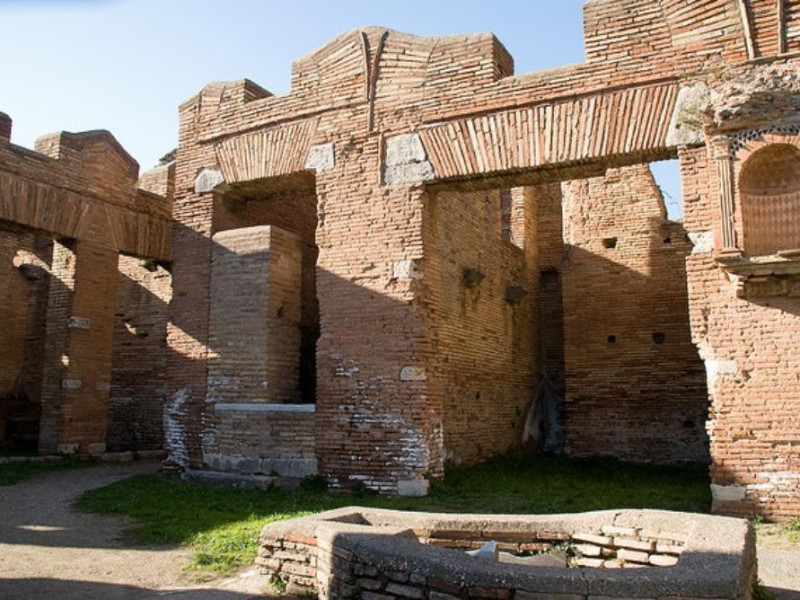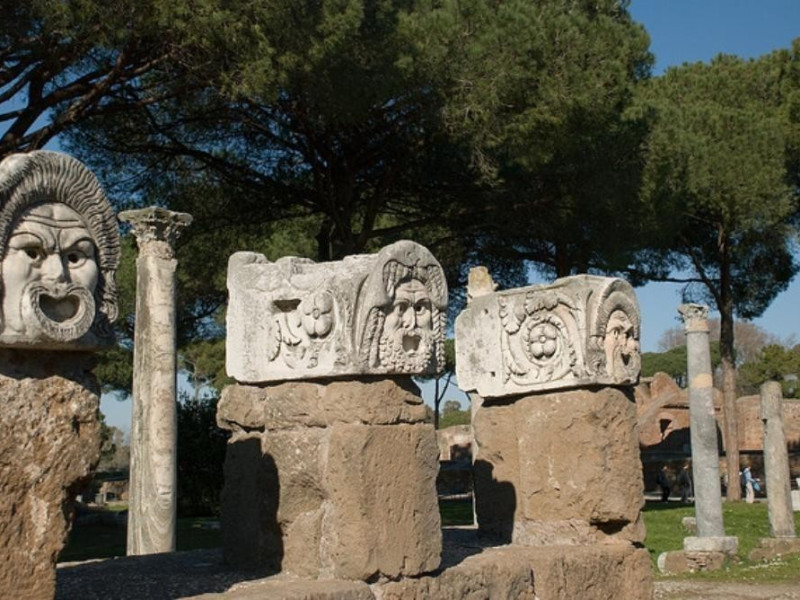Luogo - Archaeological Area
Scavi di Ostia Antica e Museo
Where
Viale dei gnoli, 717, Roma
The remains of Ancient Ostia stand on a territorial and geographical context that is very different from the ancient one: in fact, in the Roman age, the Tiber skirted the northern side of the inhabited area, while nowadays it scarcely touches a portion of the western sector, having had its bed dragged downstream by a famous and disastrous flood in 1557.
Moreover, the shoreline as well, originally close to the town, is now 4 km away from it, because of the advance of the mainland due to the debris left by the river over the last 2000 years. Ostia, therefore, was a town built on both the sea and the river and such a special position determined its relevance over the centuries from a strategic-military and an economic viewpoint.
According to an ancient tradition, it was founded as a colony by the fourth king of Rome, Ancus Marcius, about the year 620 BCE, in order to exploit the salt-mines at the mouth of the Tiber (hence the name Ostia, which derives from ostium = embouchure). Nevertheless, the most ancient remain is a fortalice (Castrum), made of tufa blocks, dating only to the second half of the 4th c. BCE, built by the Roman settlers with the solely military aim of controlling the mouth of the Tiber and the Latian coast.
Later, especially after the 2nd century BCE, when Rome gained supremacy over the whole Mediterranean sea, the military function of the town started to decrease, as it quickly became the main emporium of Rome. For this reason, particularly between the 1st and the 2nd century CE, Ostia greatly expanded by equipping itself with prominent public and private buildings.
In the following centuries, given the general decline of the Roman Empire, the town fell into a slow decay which led to the abandonment of the site after the mid-5th century CE.
Moreover, the shoreline as well, originally close to the town, is now 4 km away from it, because of the advance of the mainland due to the debris left by the river over the last 2000 years. Ostia, therefore, was a town built on both the sea and the river and such a special position determined its relevance over the centuries from a strategic-military and an economic viewpoint.
According to an ancient tradition, it was founded as a colony by the fourth king of Rome, Ancus Marcius, about the year 620 BCE, in order to exploit the salt-mines at the mouth of the Tiber (hence the name Ostia, which derives from ostium = embouchure). Nevertheless, the most ancient remain is a fortalice (Castrum), made of tufa blocks, dating only to the second half of the 4th c. BCE, built by the Roman settlers with the solely military aim of controlling the mouth of the Tiber and the Latian coast.
Later, especially after the 2nd century BCE, when Rome gained supremacy over the whole Mediterranean sea, the military function of the town started to decrease, as it quickly became the main emporium of Rome. For this reason, particularly between the 1st and the 2nd century CE, Ostia greatly expanded by equipping itself with prominent public and private buildings.
In the following centuries, given the general decline of the Roman Empire, the town fell into a slow decay which led to the abandonment of the site after the mid-5th century CE.



